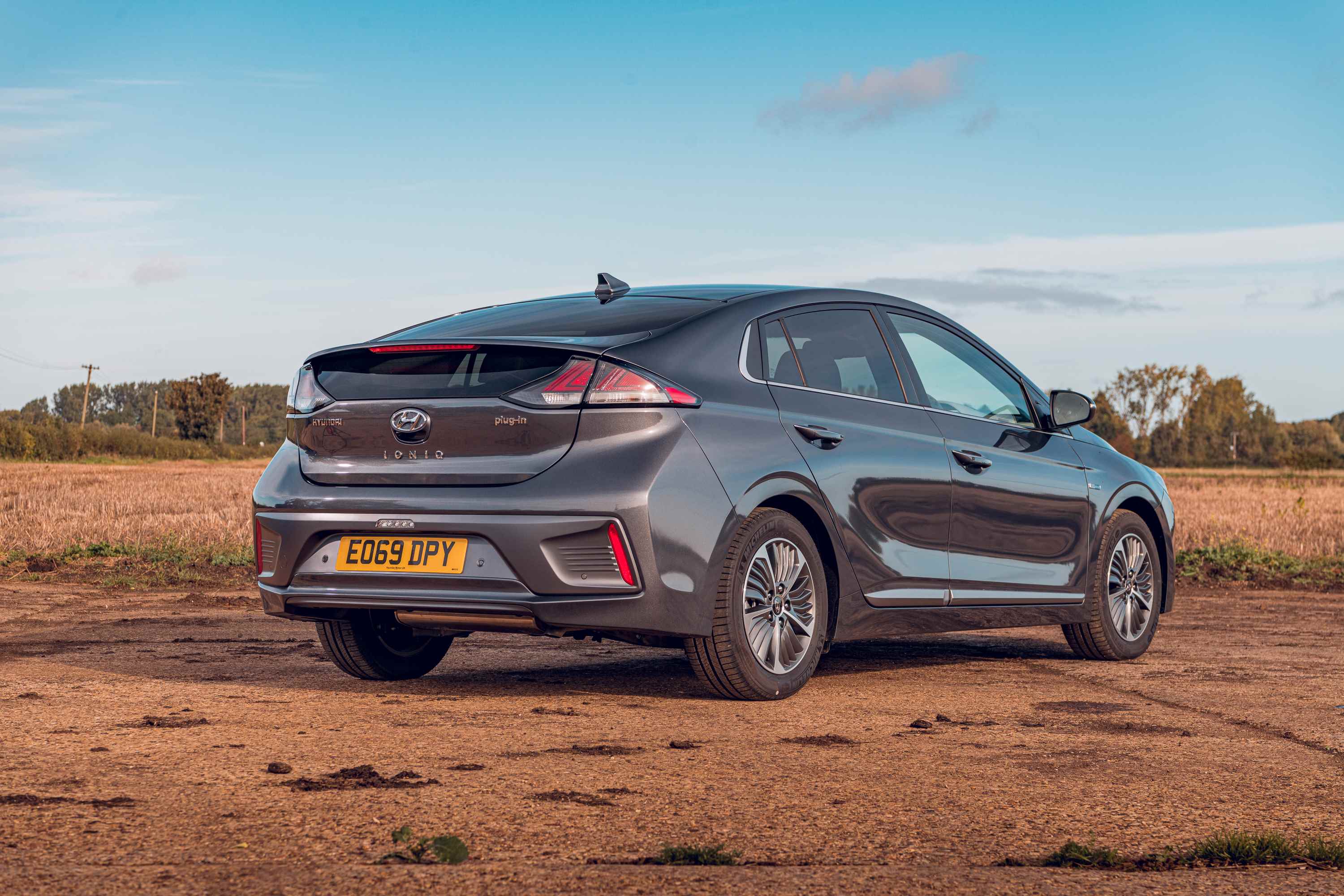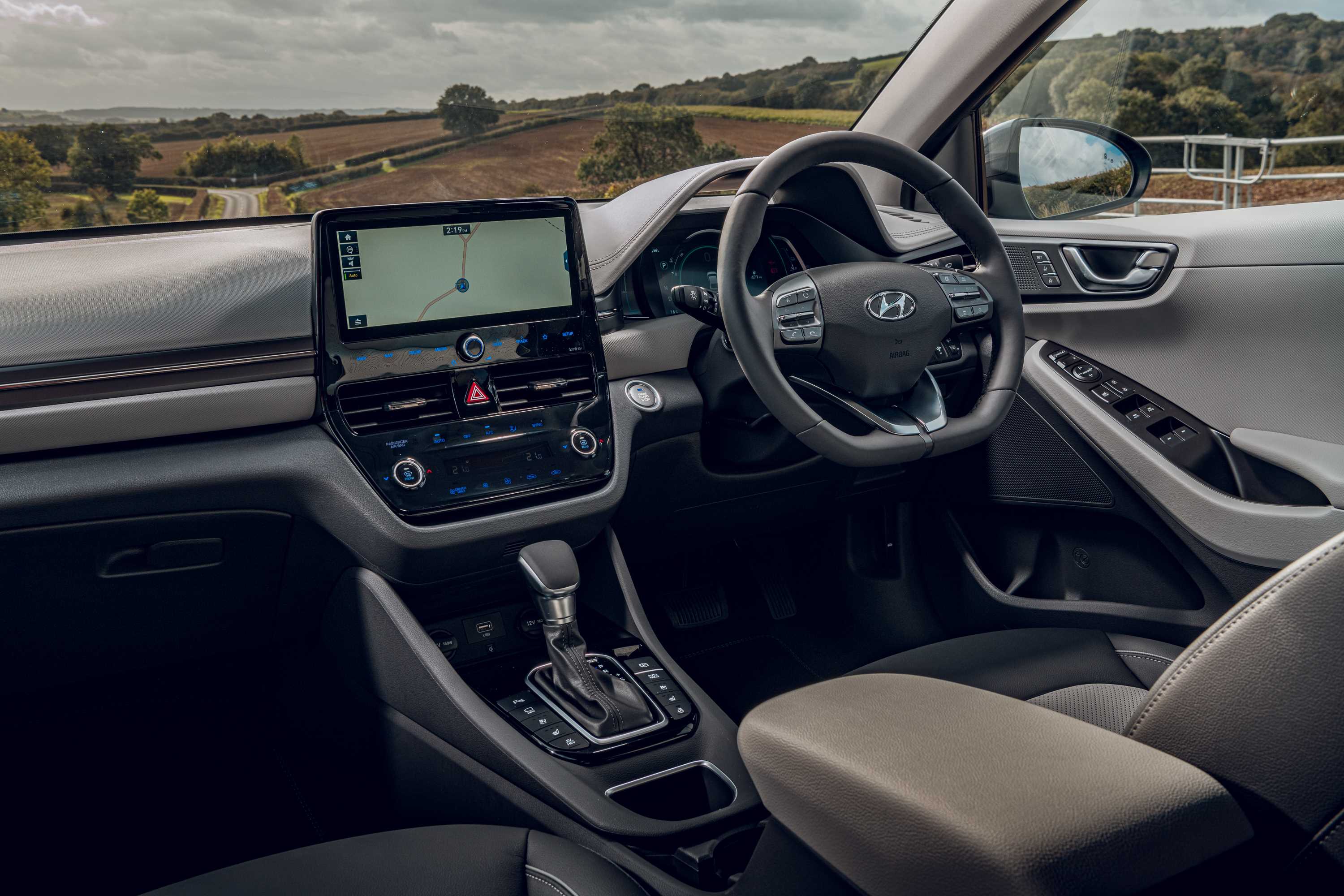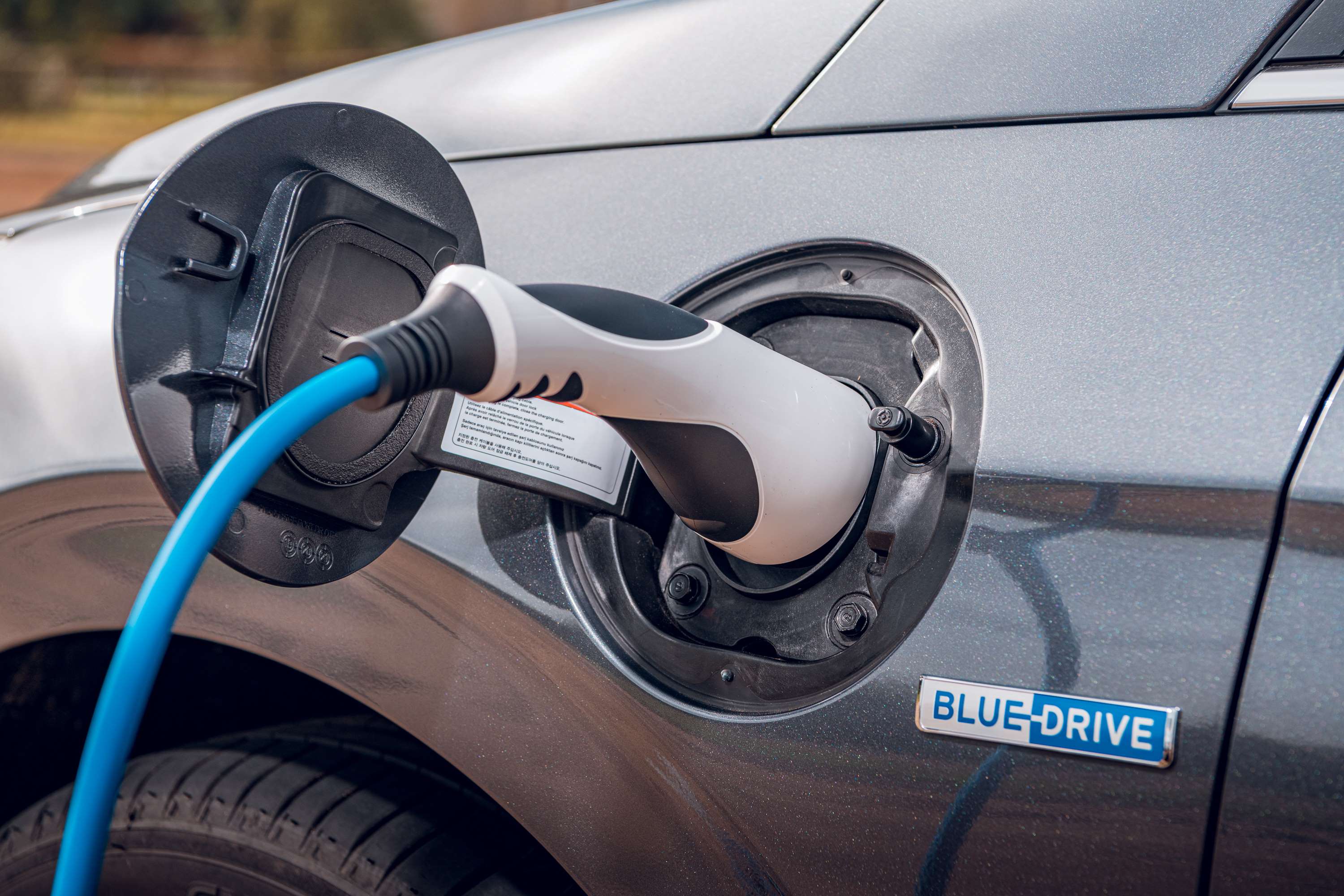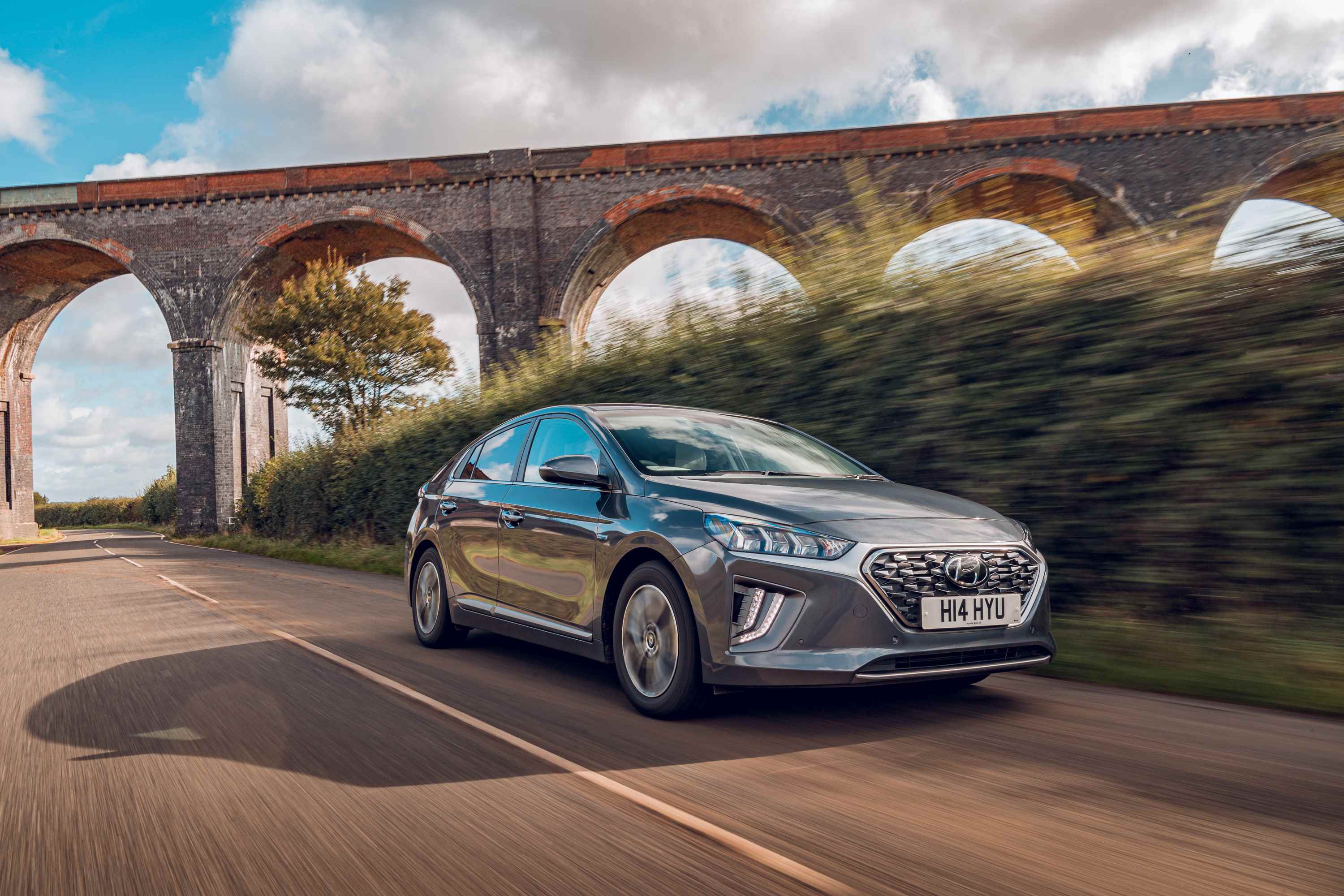Range
The official range of 32 miles is quite achievable in the Ioniq if you spend most of your time in town, although motorway speeds and cold weather will drain the battery more quickly and see you getting more like 20 – 25 miles. It’s an impressive amount of zero emissions driving for such a small battery. Rivals like the Skoda Superb iV and Passat GTE use bigger batteries yet offer similar range, but Hyundai has done well to make the Ioniq aerodynamic and fairly light by PHEV standards, so it uses less power and doesn’t need such a big battery to cover the same distance.
It is a shame that there’s no function to hold the battery charge for later in the journey, as there is with most rivals. It’s good to save battery power for urban roads where you get better range, while the petrol engine is more economical at motorway speeds.
Battery
The Hyundai’s 8.9kWh lithium-ion battery powers a single motor in this front-wheel drive car. It’s hidden beneath the boot floor so doesn’t compromise passenger space in the car, and since Hyundai’s lithium-ion batteries have been around for a few years there’s also plenty of owner reports to suggest that they last very well over the years. They don’t seem to degrade quickly at all, and you’ll find Ioniq PHEV and EV models with hundreds of thousands of miles covered and still with a very useful electric range remaining. To preserve the battery condition as much as possible, try to only charge it between 20-80% in routine use and save a full 100% top-up for when you really need it.
Charging
Charging the Hyundai Ioniq is no chore at all, and being a small battery it doesn’t take long even though charging speeds are fairly low. Plug the Ioniq PHEV into your everyday three-pin domestic socket and it’ll be fully charged in some six hours, while plugging into a home- or public car charger via the Type 2 socket in the car’s front wing will get a full battery in under three hours. There’s no rapid charging capability, so while you can plug the Ioniq into any Type 2-compatible AC charger (which is the vast majority of them, since Type 2 is the European Standard electric vehicle charging socket), three hours is the fastest charge you’ll ever get.
Both cables are provided to allow you to plug into a domestic socket or a proper car charger. There’s also a phone app that remotely connects to the car and allows you to control and monitor the charging times, see how much electric range there is, and even to check how much petrol you’ve got in the car.





















